Welcome to our blog, where we delve into fascinating topics about different pig breeds. Today, we’ll explore the Tamworth pig, uncovering its origin, size, physical characteristics, and pros and cons associated with this unique breed. The Tamworth pig, also known as the “Irish Grazer,” boasts an intriguing history that dates back to the early 19th century.
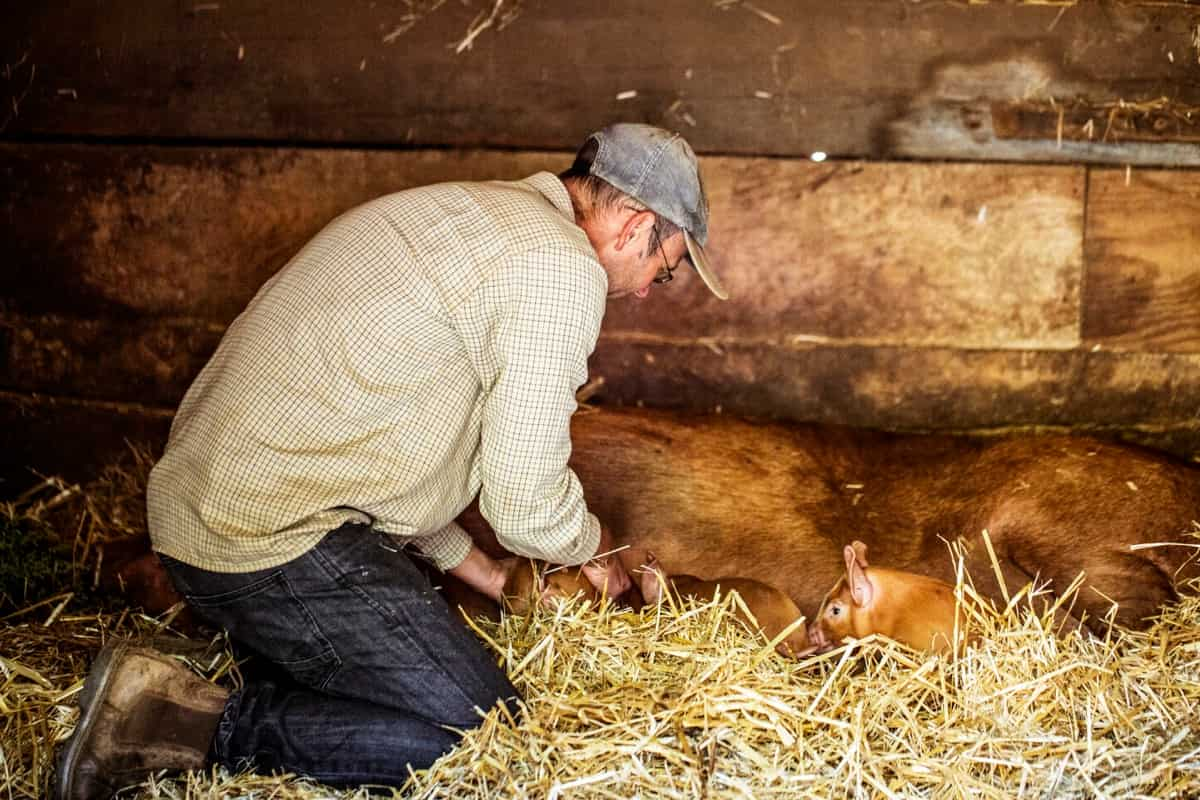
With its distinct ginger-red coat and strong, muscular build, the Tamworth is a visually striking breed. Not only does it possess exceptional foraging abilities, but it also adapts well to various climates. This article delve into the qualities that make the Tamworth pig a noteworthy breed while addressing potential drawbacks. So, let’s dive in and discover the captivating world of Tamworth pigs!
Tamworth Pig Facts
Introduction to Tamworth Pig
Tamworth pigs are a distinctive British breed that stands out for their red coloration, making it Britain’s sole red-colored pig breed. While the exact origin of the Tamworth pig remains a mystery, it is believed to have emerged in the vicinity of Tamworth, a town in southeastern Staffordshire near the Warwickshire border.
These pigs hold significant importance, as they are recognized as one of the seven British pig breeds classified as ‘priority’ by the Rare Breeds Survival Trust, indicating the highest concern for their conservation. This classification highlights the need to protect and preserve the Tamworth pig breed for future generations.
Tamworth Pig Origin and History
The Tamworth pig’s exact origins remain a mystery. Still, it is believed to have emerged around the late 18th or early 19th century near Tamworth in southeastern Staffordshire, close to the Warwickshire border. There are several theories regarding the breed’s distinctive red coloration. Some suggest it may have derived from a wild jungle pig from India by Sir Francis Lawley, while others propose that Irish pigs called ‘Irish Grazers’ were introduced by Sir Robert Peel at Drayton Manor.
Additional possibilities include a boar from the West Indies or a West African Guinea Hog from Portugal. It’s also possible that the red coloration was achieved through selective breeding alone. The Tamworth pig gained recognition as a breed in 1865 and was showcased at the Royal Show. A herd book was established in 1885, and 1906, the Tamworth Incorporated Pig Breeders Association was formed to support the breed.
In case you missed it: Auckland Island Pig Facts: Origin, Size, Physical Characteristics, Pros, and Cons
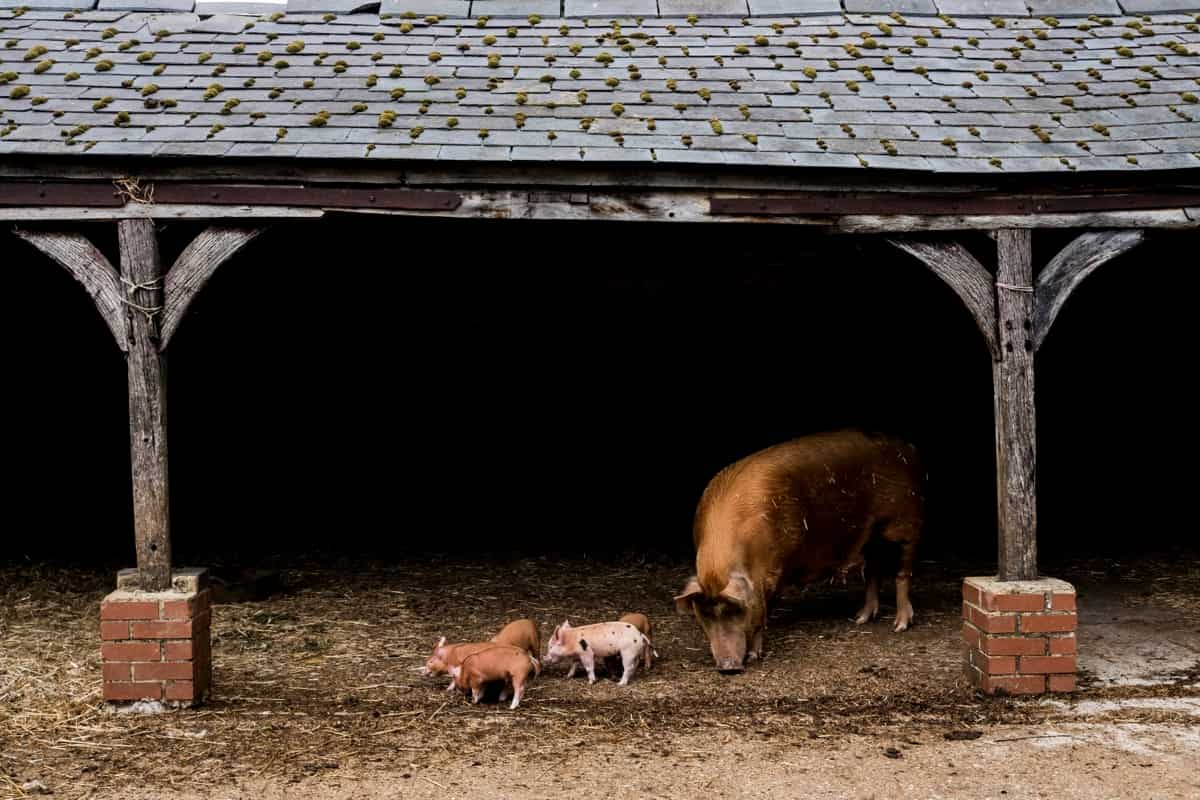
Size of Tamworth Pigs: Facts and Measurements
Tamworth pigs exhibit distinct size characteristics. Adult males of the breed typically weigh around 320 kg (705 lbs), while adult females weigh approximately 260 kg (573 lbs). In terms of length, adult Tamworth pigs can range from 110 to 140 cm (39 to 55 in), with heights averaging between 50 to 65 cm (20 to 26 in).
The breed is also known for its curled tail, which measures about 24 to 30 cm (9.4 to 12 in) in length. These measurements provide an overview of the size range commonly observed in Tamworth pigs, showcasing their robust and well-proportioned physique.
Physical Characteristics of Tamworth Pigs: Appearance and Features
Head and Ears: The Tamworth pig possesses a long snout, giving it a distinct profile. The head is slightly dished or concave, and the ears stand upright, commonly called “prick ears.”
Coat and Coloration: Their coat is characterized by long, fine, straight hair. The preferred coloration is rich ginger or red-gold, without any black hair. The skin of Tamworth pigs is flesh-colored, devoid of black spots.
Size and Weight: Tamworths are considered a medium-sized breed. Adult boars typically weigh between 250 to 370 kg (550 to 820 lb), while adult sows range from 200 to 300 kg (440 to 660 lb). The length of fully grown Tamworth pigs falls within 100 to 140 cm (39 to 55 in), and their height commonly ranges from 50 to 65 cm (20 to 26 in).
Body Structure: These pigs are known for their long necks and legs, deep sides, and narrow backs. They possess muscular and firm ham structures, contributing to their robust physique. Tamworths exhibit excellent foot structure and a well-developed skeletal system.
Litter Sizes: Tamworth pigs typically have smaller litter sizes than commercial breeds. This characteristic sets them apart in terms of breeding and reproduction.
Undesirable Features: According to breed enthusiasts, certain features are unacceptable in Tamworth pigs. These include curly hair, a turned-up nose, a coarse mane, and dark spots on the coat. Breed standards prioritize the preservation of the breed’s desired physical traits.
Unique Features of Tamworth Pigs
Tamworth pigs are unique in temperament, conservation status, and distinctive red-gold hair color. They are commonly used for meat production, have a moderate adult weight, and are suitable for beginners. Their flesh-colored skin and the specific weight range for males and females further differentiate them.
In case you missed it: Australian Yorkshire Pig Facts: Origin, Size, Physical Characteristics, Pros, and Cons

- Breed Facts: Status: Watch
- Use: Meat
- Adult Weight: Male: 500-600 lbs, Female: 500-600 lbs.
- Temperament: Tamworth pigs are known to be docile and active.
- Experience Level: Suitable for beginners.
Note: They do not thrive in confinement. Commonly used for various meat cuts like bacon, loin, chops, roasts, ham, bacon, sausage/ground, and other retail cuts.
- Conservation Status: According to FAO (2007), Tamworth pigs are not at risk. However, as of DAD-IS (2023), they are considered at risk or endangered.
- Country of Origin: Tamworth pigs originated in the United Kingdom.
- Standard: The British Pig Association and Tamworth Pig Breeders’ Club establish the standard for the breed.
- Traits: Weight: Male – 320 kg, Female – 260 kg; Skin Color: Flesh-color; Hair Color: Red-gold.
Characteristics of Tamworth Pigs
Outdoor Adaptability: The Tamworth breed reflects centuries of selection for outdoor life. They can find their food in oak and beech forests, including acorns and mast. Long heads and impressive snouts make them efficient foragers. Strong legs and sound feet enable them to walk long distances.
Ginger-Red Coats: Tamworth pigs have ginger-red coats, which provide adaptability to different climates and protect them from sunburn.
Active Intelligence and Disposition: Tamworths exhibit active intelligence and have an agreeable disposition. They are known for their social nature and enjoy being around other pigs. Overall, they are a docile breed.
Prolific Sows and Vigorous Piglets: Sows of the Tamworth breed are highly prolific and capable of producing and caring for a large litter. Piglets are vigorous, and high survivability rates are common.
Mature Weight and Bacon Breed: Both males and females of the breed reach a mature weight of 500-600 lbs. Traditionally considered a “bacon” breed, Tamworth pigs thrive on low-energy foods and grow slowly. They produce lean and fine-grained meat and bacon.
Hardy and Unsuitable for Confinement: Tamworth pigs are hardy and can survive in adverse weather conditions. However, they may need to handle summer heat better. They do not thrive in confinement or small areas, making them unsuitable for commercial production.
Suitable Housing and Skin Protection: Their thick, coarse coats make Tamworths susceptible to sunburn during molting. Suitable housing and access to mud are necessary to protect their skin and keep them cool.
In case you missed it: Pietrain Pig Facts: Origin, Size, Physical Characteristics, Pros, and Cons
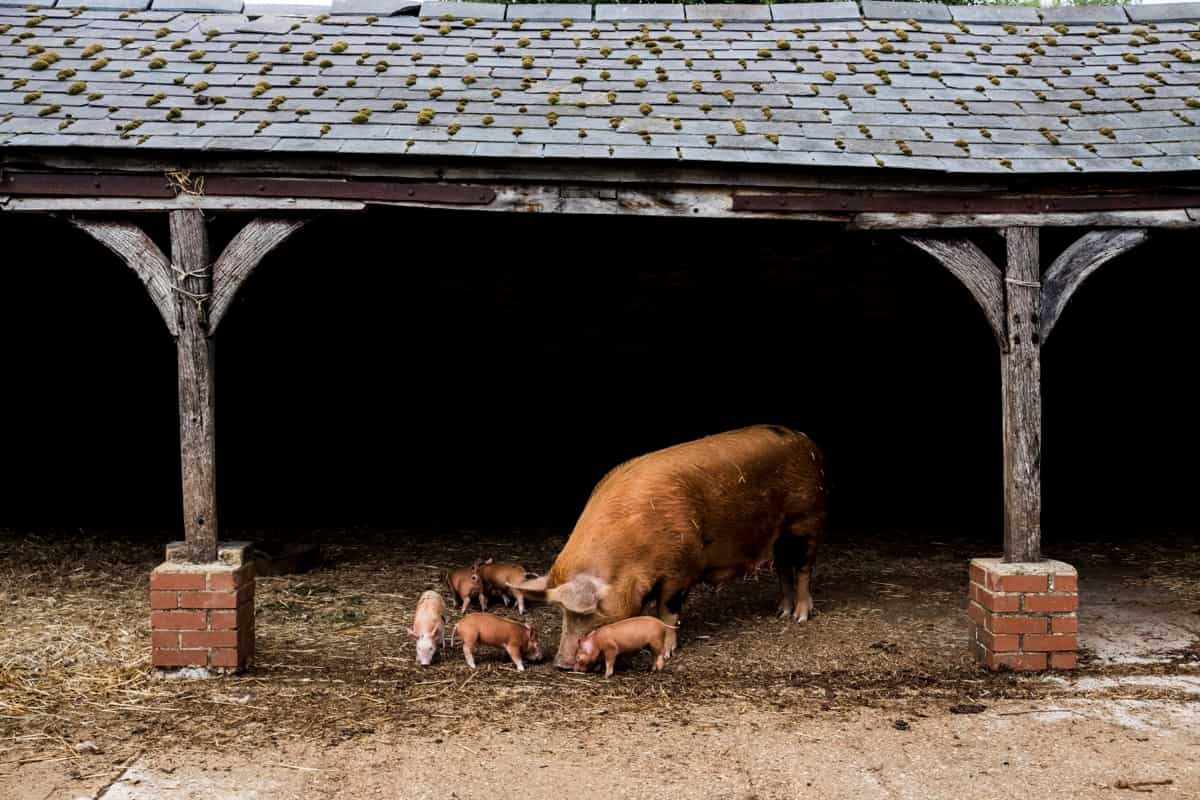
Benefits of Raising Tamworth Pigs
- Hardy and Adaptable: Tamworth pigs are known for their hardiness and adaptability to various climates and environments. They can withstand hot and cold conditions, making them suitable for different regions.
- Grazing Abilities: These pigs excel in foraging and grazing, efficiently utilizing pasture and natural resources. They have a strong instinct for rooting and can help clear land and control weeds.
- High-Quality Meat: Tamworth pork is highly regarded for its exceptional flavor, tenderness, and marbling. The meat is known for its rich, succulent taste, making it a favorite among pork enthusiasts and chefs.
- Versatility in Cuts: Raising Tamworth pigs provides a diverse range of cuts for meat production. From bacon and sausages to roasts and chops, their meat offers a variety of options for culinary preparations.
- Conservation: By raising Tamworth pigs, you contribute to the conservation of this heritage breed. They are considered at risk or endangered, and their preservation helps maintain genetic diversity in pig populations.
- Gentle Temperament: Tamworth pigs are generally docile and have a calm temperament, making them easier to handle and work with, especially for beginners or those with limited experience in pig farming.
- Efficient Feed Converters: They can convert feed efficiently into meat, resulting in cost savings for pig farmers.
- Breeders’ Support: The British Pig Association and Tamworth Pig Breeders’ Club provide resources, guidance, and support to breeders of Tamworth pigs, ensuring access to valuable expertise and a supportive community.
Drawbacks of Owning Tamworth Pigs
- Space Requirement: Tamworth pigs need to be better suited for confinement. They require ample space to roam and exercise.
- Fencing: Due to their dynamic nature, Tamworth pigs may challenge fencing. Sturdy and secure fencing is necessary to prevent escapes.
- Feeding: These pigs have a hearty appetite and require substantial food. Ensuring proper nutrition can be costly.
- Conservation Status: Tamworth pigs are considered at risk or endangered, which may pose challenges for breeding and finding available stock.
- Specialized Care: Proper management and healthcare knowledge are required to ensure the well-being of Tamworth pigs.
- Limited Availability: Compared to more common pig breeds, finding Tamworth pigs for purchase or breeding purposes can take more work.
In case you missed it: Successful Pig Farm Management and Operational Strategies: A Complete Guide
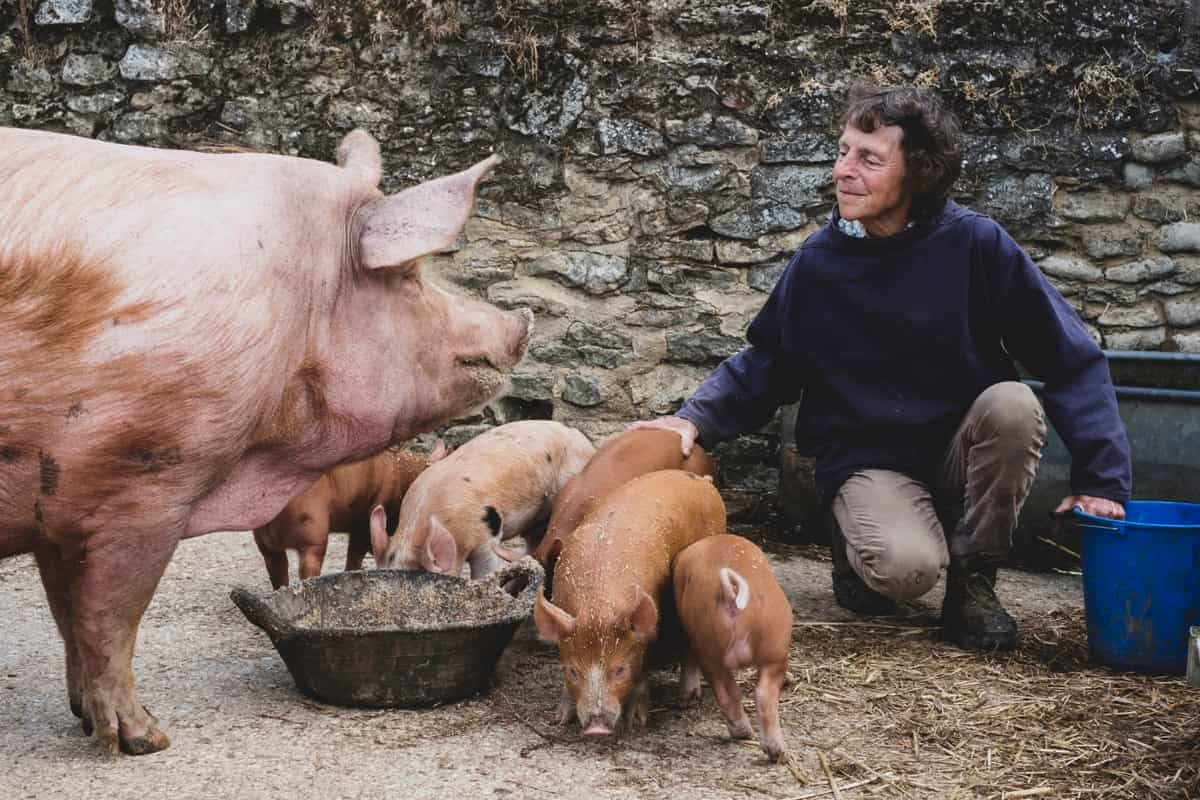
Tamworth Pig Breed Behaviour
The Tamworth pig breed possesses remarkable traits that make it well-suited for various environments. Its exceptional hardiness allows it to thrive in harsh climates, including colder regions like Scotland and Canada, where severe winters with cold and high winds prevail. These pigs are known for their durability and ruggedness.
They excel in forest grazing, efficiently thriving on bracken vegetation. Interestingly, Tamworths graze alongside cattle, benefiting from the forage left behind in open pastures. However, they can display territorial behavior, sometimes aggressive towards other livestock sharing the same grazing area. Tamworth pigs exhibit impressive excavation skills, especially when rooting for food in forests or pastures.
They are commonly utilized in forage-based farming systems. The breed’s sows display excellent maternal instincts, consistently nursing all piglets in their litter. On average, litters range from six to ten piglets. Initially, piglets are wary and wild around humans but quickly adapt to human interaction. Tamworths possess a generally pleasant disposition and enjoy human attention.
Tamworth Pig Genetics and Conservation
The Tamworth pig breed is genetically distinct from modern commercial swine, making it an ideal candidate for cross-breeding purposes. Its reputation as a “bacon pig” stems from its remarkable ability to achieve substantial body mass while maintaining low-fat levels.
In terms of breeding populations, as of 2018, the number of breeding females was approximately as follows: USA (1000), United Kingdom (340), Canada (254), Australia (55), and New Zealand (40). Conservation efforts for the breed are highly prioritized by the breeding societies in each country, with a strong emphasis on meticulous record-keeping to preserve its genetic heritage.
Tamworth Pig Breeding and Reproduction
Tamworth pigs exhibit favorable traits when it comes to breeding and reproduction. The sows are known for their excellent maternal skills and consistency in nursing all piglets within their litters. On average, litters range in size from six to ten piglets. During the breeding process, it is common to find farmers using artificial insemination to ensure controlled and successful mating.
The gestation period for Tamworth sows typically lasts around 114 days, after which they give birth to their piglets. Piglets are usually born wild and wary of humans but quickly adapt to human interaction. The breeding societies in different countries prioritize the breed’s conservation, paying close attention to record-keeping and maintaining the genetic integrity of Tamworth pigs. These efforts contribute to preserving the breed’s unique characteristics and ensuring its continued existence for future generations.
In case you missed it: How to Build a Pig Pen for Backyard Farming: A Step-by-Step Guide
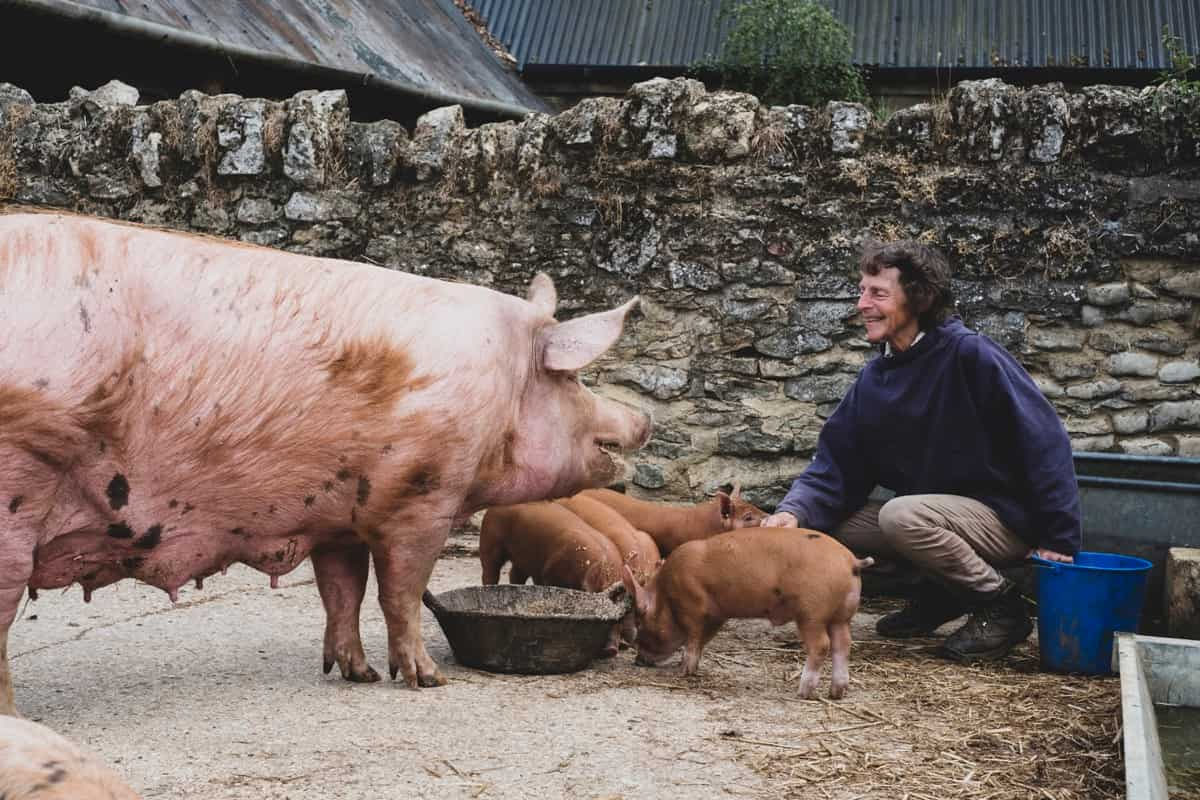
Conclusion
Tamworth pigs originate from the United Kingdom and reach a mature weight of 500-600 lbs. They have distinctive ginger-red coats and are hardy and adaptable but may not do well in confinement. Tamworths are known for their lean meat production.
- Modern Sheep Farming Technology: The Future of Sheep Husbandry
- Goat Farming Technology: The Future of Goat Husbandry
- How to Build a Low-budget Goat Shed: Cheap Ideas and Tips
- Goat Farming Training Programs in India: A Beginner’s Guide
- Types of Pesticides Used in Agriculture: A Beginner’s Guide
- Economical Aquaculture: A Guide to Low-Budget Fish Farming
- 15 Common Planting Errors That Can Doom Your Fruit Trees
- How to Make Houseplants Bushy: Effective Tips and Ideas
- Innovative Strategies for Boosting Coconut Pollination and Yield
- Pollination Strategies for Maximum Pumpkin Yield
- The Complete Guide to Chicken Fattening: Strategies for Maximum Growth
- Natural Solutions for Tulip Problems: 100% Effective Remedies for Leaf and Bulb-Related Issues
- Revolutionizing Citrus Preservation: Towards a Healthier, Greener Future
- Natural Solutions for Peony Leaf and Flower Problems: 100% Effective Remedies
- Maximizing Profits with Avocado Contract Farming in India: A Comprehensive Guide
- Natural Solutions for Hydrangea Problems: 100% Effective Remedies for Leaf and Flowers
- The Ultimate Guide to Choosing the Perfect Foliage Friend: Bringing Life Indoors
- From Sunlight to Sustainability: 15 Ways to Use Solar Technology in Agriculture
- The Ultimate Guide to Dong Tao Chicken: Exploring from History to Raising
- The Eco-Friendly Makeover: How to Convert Your Unused Swimming Pool into a Fish Pond
- Mastering the Art of Delaware Chicken Farming: Essentials for Healthy Backyard Flocks
- 20 Best Homemade Fertilizers for Money Plant: DIY Recipes and Application Methods
- How to Craft a Comprehensive Free-Range Chicken Farming Business Plan
- Brighten Your Flock: Raising Easter Egger Chickens for Beauty and Bounty
- How to Optimize Your Poultry Egg Farm Business Plan with These Strategies
- Subsidy for Spirulina Cultivation: How Indian Government Schemes Encouraging Spirulina Farmers
- Ultimate Guide to Raising Dominique Chickens: Breeding, Feeding, Egg-Production, and Care
- Mastering the Art of Raising Jersey Giant Chickens: Care, Feeding, and More
- Ultimate Guide to Raising Legbar Chickens: Breeding, Farming Practices, Diet, Egg-Production
- How to Raise Welsummer Chickens: A Comprehensive Guide for Beginners
- How to Protect Indoor Plants in Winter: A Comprehensive Guide
- Ultimate Guide to Grow Bag Gardening: Tips, Tricks, and Planting Ideas for Urban Gardeners
- Guide to Lotus Cultivation: How to Propagate, Plant, Grow, Care, Cost, and Profit
- Agriculture Drone Subsidy Scheme: Government Kisan Subsidy, License, and How to Apply Online
- Ultimate Guide to Raising Araucana Chickens: Breed Profile, Farming Economics, Diet, and Care
- Bringing Hydroponics to Classroom: Importance, Benefits of Learning for School Students